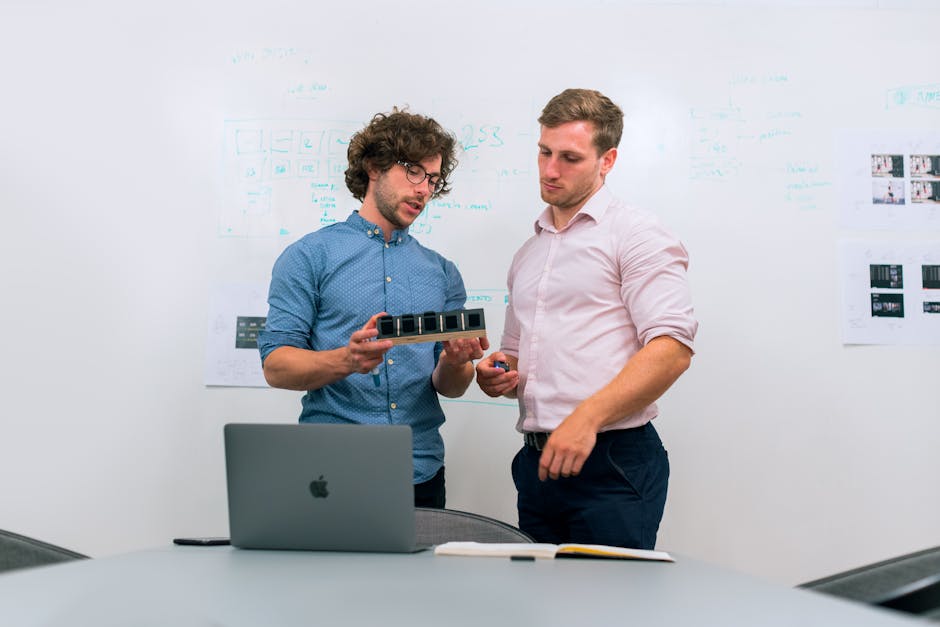Building a Sustainable Micro SaaS: A Bootstrapper’s Guide
When it comes to building a sustainable micro SaaS, you’re faced with the challenge of navigating the complexities of bootstrapping a business in a competitive landscape. As an entrepreneur, you’ve likely encountered the unique hurdles that come with establishing and growing a software-as-a-service venture.
However, there’s a strategic approach that can help you not only survive but thrive in this environment. By uncovering the nuances of niche market opportunities and crafting a resilient revenue model, you can pave the way for long-term success.
But how do you effectively identify these opportunities and develop a sustainable business model?
Key Takeaways
- Thorough market research and identifying niche market opportunities are essential for building a sustainable micro SaaS.
- Creating a minimum viable product (MVP) that addresses the core needs of the target audience allows for quick launch and gathering of user feedback.
- Implementing effective marketing and customer acquisition strategies, such as content marketing and referral programmes, can help attract and engage potential customers.
- Establishing a revenue model and pricing strategy that includes subscription pricing and diversification of revenue streams is crucial for long-term success.
Identifying Niche Market Opportunities

To identify niche market opportunities for your sustainable micro SaaS, start by conducting thorough market research to pinpoint underserved customer segments.
Market research involves delving into the needs, preferences, and pain points of potential customers to understand their unmet demands. This may involve analysing existing data, conducting surveys, and studying competitors to identify gaps in the market.
By delving into market research, you can gain valuable insights into the target audience’s characteristics, behaviours, and purchasing patterns. This data will enable you to identify specific customer segments that are currently underserved or overlooked in the market.
Once you have conducted comprehensive market research, the next step is to focus on target audience identification. This involves narrowing down your potential customer base to specific groups that aline with your SaaS offering.
By understanding your target audience’s demographics, psychographics, and buying behaviour, you can tailor your product and marketing efforts to effectively reach and resonate with these niche markets.
Identifying niche market opportunities through market research and target audience identification is crucial for the sustainable growth of your micro SaaS.
Developing a Minimum Viable Product (MVP)

After identifying niche market opportunities through thorough market research, the next step is developing a Minimum Viable Product (MVP) for your sustainable micro SaaS.
This involves creating a basic version of your software that addresses the core needs of your target audience. The key here is to focus on essential features that will allow you to quickly launch and start gathering user feedback for product validation.
By taking an iterative development and agile approach, you can continuously refine and improve your MVP based on user input. This agile methodology enables you to adapt to changing market demands and user preferences, ensuring that your product remains relevant.
Embracing this approach empowers you to efficiently allocate resources and avoid investing time and money into unnecessary features.
Implementing Scalable Customer Acquisition Strategies

Implement scalable customer acquisition strategies by identifying the most effective channels for reaching your target audience and optimising your marketing efforts accordingly. To achieve this, you should focus on content marketing to attract and engage potential customers. By creating valuable and relevant content, you can build trust and establish your brand as an authority in your industry.
Additionally, implementing referral programmes can help you leverage your existing customer base to bring in new customers. Encouraging satisfied customers to refer their friends and colleagues can significantly expand your customer acquisition efforts.
-
Leverage the power of storytelling: Connect with your audience on a deeper level by crafting compelling stories that resonate with their experiences and aspirations.
-
Foster a sense of community: Create a community around your product or service to provide a platform for your customers to connect, share their experiences, and support each other.
-
Empower your customers: Offer incentives and rewards to customers who advocate for your brand, turning them into loyal brand ambassadors.
-
Emphasise authenticity: Be genuine and transparent in your marketing efforts to build credibility and trust with your audience.
Building a Resilient Revenue Model

By leveraging the scalable customer acquisition strategies previously discussed, you can now focus on building a resilient revenue model to ensure the long-term sustainability of your micro SaaS business. One key aspect of creating a resilient revenue model is to implement subscription pricing. This model allows you to establish predictable, recurring revenue streams, providing financial stability and allowing you to forecast future growth more accurately. Offering different subscription tiers with varying features can also attract a wider range of customers while maximising revenue potential.
Another crucial element in building a resilient revenue model is revenue diversification. Relying solely on one source of income can leave your business vulnerable to market fluctuations or changes in customer behaviour. By diversifying your revenue streams, such as offering additional services or products related to your micro SaaS, you can mitigate risks and create multiple streams of income. This approach not only provides a safety net but also opens up opportunities for expansion and innovation.
Incorporating subscription pricing and revenue diversification into your business model won’t only enhance its resilience but also create a solid foundation for sustained success.
Establishing Sustainable Customer Retention Tactics

To ensure the longevity of your micro SaaS business, focus on cultivating sustainable customer retention tactics that foster long-term relationships and loyalty. By prioritising customer engagement and implementing effective loyalty programmes, you can create a community of dedicated users who are invested in your product’s success.
Here are some key tactics to help you establish sustainable customer retention:
-
Personalised Interactions: Engage with your customers on a personal level, showing genuine interest in their needs and providing tailored solutions. This fosters a sense of belonging and value, strengthening their loyalty to your brand.
-
Consistent Communication: Keep your customers informed about updates, new features, and industry insights. Regular communication demonstrates your commitment to their success and keeps your brand top-of-mind.
-
Exclusive Rewards: Offer exclusive perks and rewards to long-term customers, such as early access to new features or special discounts. This makes them feel appreciated and encourages continued loyalty.
-
Community Building: Create opportunities for customers to connect with each other, fostering a sense of community around your product. This not only enhances their overall experience but also builds a network of advocates who can help promote your brand.
Leveraging Operational Efficiency and Automation

Maximising operational efficiency through automation is essential for scaling your micro SaaS business while maintaining a lean and agile operation. Operational streamlining allows you to focus on high-value tasks, reducing the time and effort spent on repetitive, low-impact activities. By implementing automated workflows, you can free up valuable resources and ensure consistent and error-free processes. This not only increases productivity but also enhances the overall quality of your service, leading to higher customer satisfaction and retention.
Leveraging operational efficiency and automation empowers you to take control of your time and resources, giving you the freedom to direct your energy towards innovation and growth. With streamlined operations, you can respond swiftly to market changes and customer needs, staying ahead of the competition. Automated workflows also provide valuable insights into your business processes, enabling you to make data-driven decisions and optimise performance.
Frequently Asked Questions
How Can I Ensure That My Micro Saas Business Is Environmentally Sustainable?
To ensure your micro SaaS business is environmentally sustainable, incorporate eco-friendly practises and green technology solutions. By doing so, you can minimise your environmental impact and contribute to a healthier planet while running your business.
What Are Some Common Challenges Bootstrappers Face When Building a Sustainable Micro Saas?
Struggling with customer retention and nailing down a solid pricing strategy? You’re not alone. Many bootstrappers face these challenges when building a sustainable micro SaaS. But with determination and flexibility, you can overcome them.
Are There Specific Legal or Regulatory Considerations to Keep in Mind When Developing a Sustainable Micro Saas?
When developing a sustainable micro SaaS, legal compliance and regulatory requirements are crucial. Ensure you understand the laws and regulations relevant to your industry and location to avoid potential issues down the road.
How Can I Effectively Measure the Long-Term Impact of My Sustainable Micro Saas on the Market and Environment?
Maximising market analysis and mastering environmental impact assessment ensures long-term success. Integrate customer feedback for effective metric tracking. Embrace freedom in your approach and watch your sustainable micro SaaS thrive in the market and environment.
What Are Some Unique Ways to Build a Strong Community Around a Sustainable Micro Saas Product?
To build a strong community around your sustainable micro SaaS, focus on engaging with your users, fostering a sense of belonging, and providing value through meaningful interactions. This approach drives sustainable growth and fosters customer retention.
Conclusion
You’ve learnt the key steps to building a sustainable micro SaaS business.
But you might be thinking, ‘It sounds like a lot of work.’
However, by following these strategies, you’ll set yourself up for long-term success and stability.
With dedication and strategic planning, you can overcome any challenges and create a thriving micro SaaS that makes a meaningful impact in the market.
So, get ready to roll up your sleeves and make it happen!
Contact us to discuss our services now!